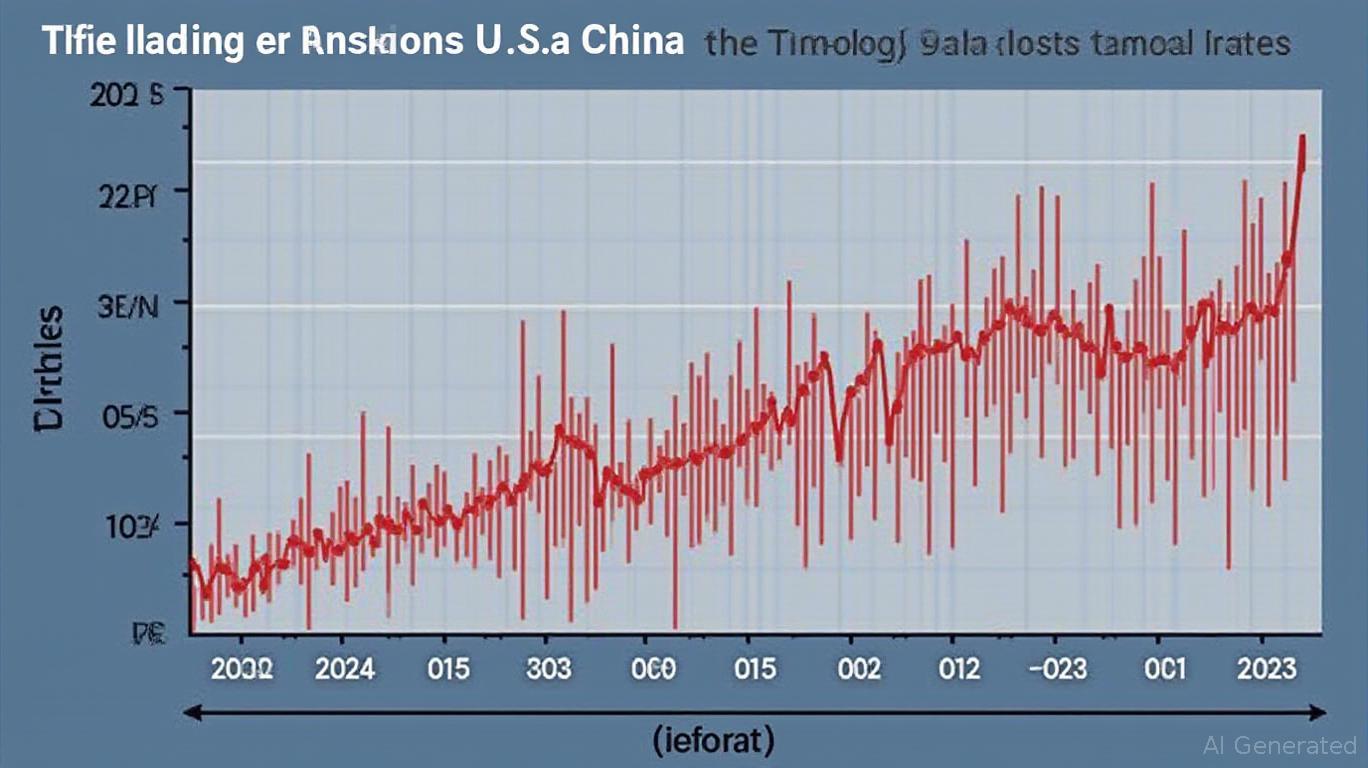Navigating the Tariff Tightrope: Trade Talks, Cyclical Shifts, and the Path to Equity Resilience
The U.S.-China trade negotiations in June 2025 have introduced a fragile equilibrium, with temporary tariff reductions offering a glimmer of hope for equity markets. Yet, the volatility of past tariff policies and unresolved strategic disputes—particularly over rare earth minerals and technology—suggest caution is warranted. Investors must balance near-term opportunities in cyclical sectors with the risks of renewed trade tensions, all while monitoring the Federal Reserve's response to inflation. Below, we dissect the evolving landscape and outline actionable strategies for resilient equity portfolios.
The Tariff Truce: Progress, Pitfalls, and the Rare Earth Wildcard
The June London talks marked a modest step forward, with tariffs reduced to 30% (U.S.) and 10% (China) under the May 2025 truce. This temporary reprieve has eased pressures on sectors like semiconductors and industrials, which bore the brunt of earlier 145% stacked tariffs. However, the agreement's 90-day lifespan—expiring in early August—leaves markets vulnerable to renewed escalation, especially given President Trump's history of sudden tariff reversals.

The critical sticking point remains China's rare earth export controls. By restricting supplies of critical minerals like samarium and gadolinium—essential for defense and tech applications—China has weaponized its dominance in global supply chains. A resolution here could unlock significant upside for industrials and tech, but progress hinges on concessions neither side has yet made.
Cyclical Rotation: Betting on Tariff Relief, but with Limits
The tariff truce has already spurred optimism in cyclical sectors. Semiconductor stocks, for instance, have stabilized as reduced tariffs lower input costs and ease supply chain bottlenecks. Automakers like Ford and Tesla, meanwhile, may benefit from the rollback of 25% auto tariffs, though lingering 50% steel tariffs remain a headwind.
Yet, the rotation into cyclical equities is far from a slam dunk. Key risks include:
1. Tariff Volatility: Trump's penchant for surprise tariff hikes (e.g., the April 2025 spike to 125%) could reignite market turbulence.
2. Supply Chain Lingering Issues: Even with lower tariffs, China's rare earth controls and U.S. tech export bans (e.g., AI chips) limit full normalization.
3. Profitability Pressures: Companies in capital-intensive sectors like steel and energy may struggle to offset costs despite tariff relief.
Investment Play: Focus on sector leaders with pricing power. For semiconductors, consider names like Texas Instruments (TXN), which derives a smaller share of revenue from China and benefits from AI-driven demand. In industrials, Caterpillar (CAT)'s diversified exposure to global infrastructure projects offers a hedge against trade volatility.
The Fed's Role: CPI Data to Determine Rate Trajectory
The Federal Reserve's policy path—shaped by the July CPI report—will amplify or dampen equity gains. A lower-than-expected CPI print could signal a Fed pause, lifting risk assets. Conversely, stubbornly high inflation might force further hikes, squeezing equities with stretched valuations.
Why It Matters: A Fed pause would provide breathing room for cyclical stocks, while a hawkish pivot could favor defensive sectors like utilities. Investors should treat the CPI release (July 11) as a critical inflection point for positioning.
Quality Equities: The Safest Bet in a Volatile Trade Landscape
Amid the uncertainty, the safest strategy is to prioritize quality equities with:
1. Exposure to Rare Earth Resolutions: Companies involved in rare earth processing (e.g., Lynas Corporation in Australia) or those with diversified supply chains (e.g., Apple (AAPL), which has reduced reliance on Chinese manufacturing) stand to gain disproportionately from trade de-escalation.
2. Strong Balance Sheets: Avoid over-leveraged firms; instead, favor those with low debt and steady cash flows, such as Microsoft (MSFT) or Procter & Gamble (PG).
3. Dividend Stability: Utilities like NextEra Energy (NEE) offer a hedge against both trade and rate risks.
Conclusion: Proceed with Caution, but Stay Engaged
The trade truce has created a tactical window for selective cyclical exposure, particularly in tech and industrials. However, the risks of renewed tariff spikes—and the unresolved rare earth imbroglio—mean investors should remain nimble. Pair sector bets with a defensive core focused on quality equities and monitor the CPI for clues on Fed policy. In this high-stakes game of geopolitical chess, patience and diversification will be key to navigating the tariff tightrope.


Comments
No comments yet